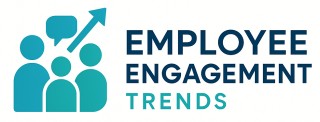
Understanding the Importance of Staff Development Days
Recognizing the Value of Scheduled Development
Understanding the importance of staff development days is crucial for fostering a culture of learning and growth within any organization. These dedicated times are invaluable opportunities for employees to pause from their day-to-day responsibilities and focus on personal and professional growth. In an ever-evolving work environment, providing structured training sessions and activities can help bridge skill gaps and promote career growth among team members.
Staff development days serve as a platform for reinforcing core competencies, such as leadership, time management, and emotional intelligence, which are essential for both personal and career growth. These days also provide the space for teachers, employees, and staff members to participate in group discussions, engage in stress management activities, and set realistic development goals. Planned professional development sessions can be tailored to address the specific learning needs of the team.
Professional development is not just beneficial for employees; it also supports wider organizational goals. When team members apply learned skills effectively, it leads to increased productivity and a more engaged workforce. Creating a supportive environment where employees feel valued and equipped to succeed is a key step towards building a committed team.
It's also essential to recognize the logistical importance of planning effective staff development days. Proper planning not only ensures the smooth execution of these sessions but also maximizes their impact. By thoughtfully organizing these days, leaders can establish a routine that aligns with the organization's mission and vision for professional growth.
To further explore how you can implement these valuable sessions and set them up for success, read our insights on crafting effective staff communications.
Planning an Effective Staff Development Day
Designing an Impactful Day for Professional Growth
Creating a meaningful staff development day requires thoughtful planning and foresight. A well-organized development day empowers team members, enhancing their skills and encouraging professional growth. To achieve this, several key elements need careful consideration:- Define Clear Objectives: Establishing development goals for the day is crucial. Will the sessions focus on leadership, stress management, or time management? Clearly defining the aims helps in aligning the activities and ensuring everyone from teachers to support staff can apply learned skills effectively.
- Select Relevant Topics: Topics should resonate with employees, aiding in career growth and supporting a positive work culture. Professional development areas such as emotional intelligence and personal professional skills can foster engagement among staff members.
- Balance Learning and Activities: Blend traditional training sessions with interactive activities. Group discussions and team-building exercises can enhance the learning experience by engaging members emotionally and intellectually. This mix supports the overall development of employees in a more comprehensive manner.
- Incorporate Diverse Formats: Different team members have varying learning preferences. Utilizing a combination of lectures, workshops, and hands-on sessions caters to a broad range of professional learning styles.
- Plan for Adequate Reflection Time: Allocate time for staff to reflect on what they have learned. This reflection will help them consider how to incorporate new skills in their work effectively.
- Maintain Flexibility: Not everything goes according to plan, and sometimes spontaneous changes can lead to unexpected professional growth. A flexible schedule allows for adjustments based on real-time needs and feedback from participants.
Engagement Strategies for Staff Development Days
Creating an Engaging Atmosphere
To truly enhance employee engagement during staff development days, it's crucial to create an atmosphere that fosters interaction and enthusiasm. This can be achieved by incorporating a variety of activities that cater to different learning styles and preferences. For instance, interactive training sessions and group discussions can help team members feel more involved and valued. Additionally, incorporating elements of fun and relaxation, such as icebreakers or team-building exercises, can significantly boost morale and encourage participation.
Incorporating Relevant Content
Ensuring that the content of the development day is relevant to the employees' roles and career aspirations is key. Tailoring sessions to address specific professional development needs, such as time management, emotional intelligence, and stress management, will help employees see the direct benefits of their participation. This approach not only supports career growth but also aligns with the organization's development goals.
Encouraging Leadership and Support
Leadership plays a pivotal role in the success of staff development days. Leaders should actively participate in the sessions, demonstrating their commitment to professional growth and learning. Their involvement can inspire team members and reinforce a culture of continuous improvement. Moreover, providing ongoing support and follow-up after the development day will help employees apply learned skills in their daily work, fostering a sense of accomplishment and motivation.
Utilizing Technology and Resources
Leveraging technology can enhance the effectiveness of staff development days. Virtual tools and platforms can facilitate remote participation, making it easier for all employees to engage, regardless of their location. Additionally, using digital resources for training and development can provide employees with access to a wealth of information and learning opportunities beyond the development day itself. For more insights on enhancing motivation through incentives, you can explore this resource.
Measuring the Impact of Staff Development Days
Assessing the Influence of a Well-Executed Staff Development Day
Evaluating the effectiveness of a staff development day is critical for understanding its impact on employee engagement and professional growth. A thorough assessment can help team members and leadership glean insights into which aspects were successful and which areas may require refinement for future sessions. One effective method for measuring impact is to gather immediate feedback from employees. This can be achieved through surveys distributed at the end of the development day, providing a platform for staff members to share their thoughts on the activities, training sessions, and learning outcomes. Ensure that questions cover all elements of the day, including time management and emotional intelligence sessions. The impact assessment should also monitor the long-term career growth and development of participants. Track whether employees apply learned skills in their daily work, and watch for improvements in team dynamics and stress management. Group discussions during the day can foster cooperative relationships and set the stage for continued professional growth, but follow-ups are crucial to see if these connections deepen or result in measurable outcomes. Observation and feedback from leadership and trainers can offer additional perspectives on whether the development goals of the day were met. Witnessing firsthand how staff members engage with the training and each other provides valuable qualitative data. Furthermore, analyzing long-term data on staff development can indicate trends in employee retention, job satisfaction, and productivity. By consistently measuring these metrics across multiple development days, organizations can fine-tune their approach to fostering a supportive culture, ultimately enhancing professional and personal growth. Finally, consider external benchmarking against similar organizations to gauge how your staff development initiatives fare in comparison. This can illuminate gaps or strengths in your approach, ensuring that your planned professional development days remain effective and impactful.Addressing Common Challenges
Overcoming Common Pitfalls in Execution
Even the most meticulously planned professional development days can encounter obstacles that threaten to derail their success. Here are some common challenges and strategies to help your team navigate them smoothly:- Lack of Engagement: Engaging all team members can be difficult, especially if sessions do not align with their interests or career growth plans. To promote active involvement, incorporate diverse activities such as group discussions, hands-on learning, and interactive workshops. Involving employees in the planning process can also ensure content resonates with their professional development goals.
- Insufficient Time and Resources: Balancing daily work obligations with development days can strain available time and budgets. Proper time management and resource allocation are crucial. Schedule sessions thoughtfully, considering peak work periods to minimize disruption. Seek cost-effective training solutions—enabling staff members to access quality learning without a financial burden.
- Resistance to Change: Some staff may be hesitant to embrace new training methods or leadership styles introduced during development days. Addressing emotional intelligence and stress management can alleviate these concerns. Building a supportive culture that encourages open dialogue about personal and professional growth can foster a more adaptable mindset.
- Measuring Impact: Without clear metrics, it can be challenging to evaluate the effectiveness of staff development initiatives. Implement tracking systems for both qualitative and quantitative outcomes to measure improvements in areas such as teamwork, leadership skills, and employee engagement over time.
Case Studies and Success Stories
Real-Life Examples of Successful Staff Development Initiatives
Many organizations have successfully incorporated staff development days to boost employee engagement and improve professional growth. Here are some examples that illustrate how various methods can enhance the effectiveness of these initiatives.- Transforming Teacher Engagement in Schools: In educational settings, well-planned staff development days have seen a notable improvement in teacher engagement. By incorporating training sessions focusing on emotional intelligence and stress management, schools have created a supportive culture that values career growth and professional development.
- Innovative Training in Corporate Environments: Some companies have taken a creative approach to staff development by organizing interactive activities that include role-playing exercises and team-building activities. These days have provided team members with the opportunity to apply learned skills in real-world scenarios, fostering a sense of belonging and enhancing their leadership abilities.
- Emphasizing Personal and Professional Growth: One organization developed a unique program by offering employees the chance to set personal professional development goals. Through structured training sessions, supported by expert facilitators, team members were able to enhance their time management skills, paving the way for career advancement.













